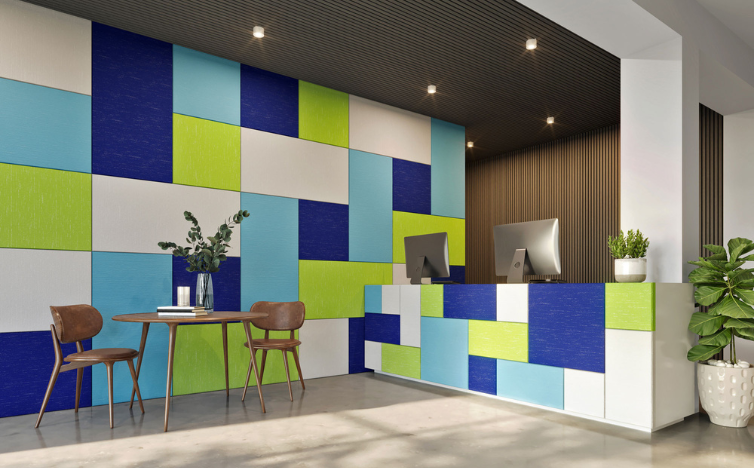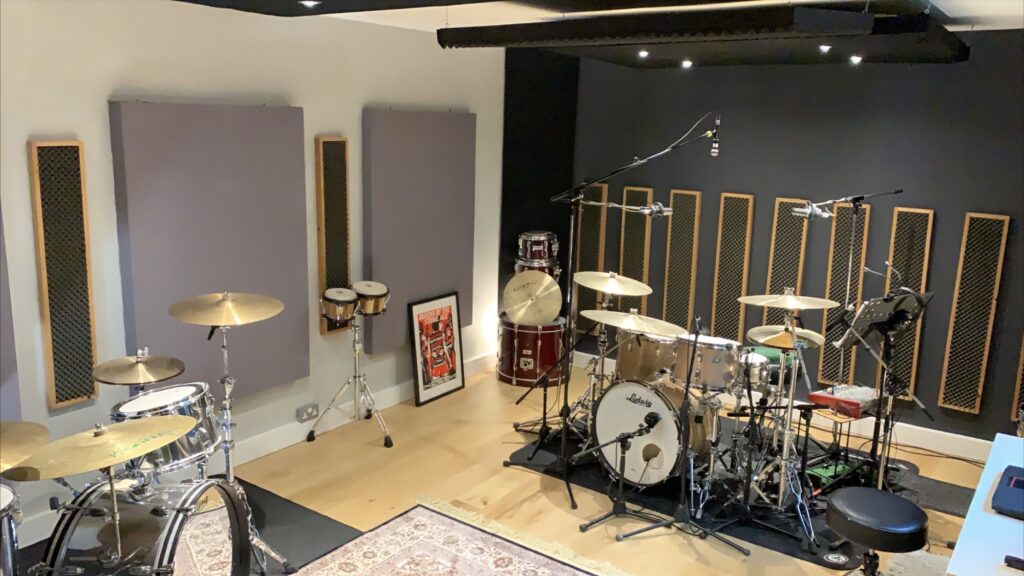Acoustic panels are increasingly popular for controlling sound in homes, offices, and other spaces. However, with their popularity comes a fair share of misconceptions. From doubts about effectiveness to misunderstandings of their role in aesthetics, these myths can deter people from using a solution that could vastly improve their space’s acoustic quality. In this article, we’ll debunk the top myths about acoustic panels.
Top 8 Myths About Acoustic Panels

1: Acoustic Panels Are Only for Recording Studios
Reality: Acoustic panels are versatile and benefit numerous spaces.
While acoustic panels are essential in recording studios to minimize echo and control sound, they are equally useful in many other environments. Offices, restaurants, conference rooms, classrooms, and even home theaters use acoustic panels to reduce noise and enhance clarity. Whether you’re looking to reduce distractions in an open office or improve sound quality in a home entertainment space, acoustic panels offer a wide range of applications beyond studios.
2: Acoustic Panels Make Rooms Completely Soundproof
Reality: Acoustic panels reduce sound reflections, but they don’t block noise entirely.
Many people think that acoustic panels will make a room soundproof, but there’s a difference between soundproofing and sound absorption. Acoustic panels help control sound within a room by absorbing reflections, making it easier to hear conversations or audio clearly. However, they don’t prevent sound from entering or leaving a room. For true soundproofing, more intensive methods such as adding mass-loaded vinyl or sealing gaps around doors are necessary.
3: Acoustic Panels Are Unattractive and Ruin Aesthetic Appeal
Reality: Acoustic panels come in various styles and can enhance aesthetics.
A common misconception is that acoustic panels are bulky, bland, or unsightly. In reality, they are available in a wide range of colors, shapes, and materials that complement interior design. Many manufacturers now create panels that resemble artwork or blend seamlessly with décor, making them not only functional but also visually appealing. Acoustic panels can even enhance a space by adding a modern or unique element to the room.
4: Acoustic Panels Are Expensive and Unnecessary
Reality: Acoustic panels are available in many budget-friendly options and improve quality of life.
While some high-end panels are costly, acoustic panels come in a variety of price ranges, making them accessible to various budgets. Affordable options are effective for most environments, especially if the goal is to reduce general noise or echo. Additionally, the improvement in sound quality and reduction in stress caused by noise can make acoustic panels a valuable investment in any space where clear communication or relaxation is important.
5: Acoustic Panels Are Hard to Install and Maintain
Reality: Acoustic panels are easy to install, remove, and maintain.
Many assume acoustic panels require professional installation or special care. However, most panels come with easy-to-use mounting solutions that allow for DIY installation, and some can even be mounted without damaging walls. Maintenance is minimal, typically just involving regular dusting or cleaning with a mild cleaner. This ease of use makes acoustic panels suitable for rented spaces or areas where flexibility is required.
6: All Acoustic Panels Work the Same
Reality: Acoustic panels vary in effectiveness based on materials and design.
Not all acoustic panels offer the same level of sound absorption. Materials, thickness, and surface area all influence a panel’s performance. Some panels are designed to absorb higher frequencies, while others are better for low frequencies. For optimal results, selecting panels designed for specific acoustical needs or combining different types of panels is recommended. This variation allows users to customize solutions based on the unique acoustic challenges of their space.
7: Acoustic Panels Are Only Useful for Large Spaces
Reality: Acoustic panels improve sound quality in both large and small spaces.
There is a misconception that only large spaces with severe echo problems need acoustic panels. However, small rooms can also suffer from poor acoustics, especially if they have hard surfaces that reflect sound, such as tiled bathrooms or kitchen areas. Installing even a few panels can make a noticeable difference in smaller spaces, making conversations easier to understand and improving overall sound quality.
8: Acoustic Panels Are Only Necessary for Music and Audio Work
Reality: Acoustic panels benefit various environments by reducing everyday noise.
While acoustic panels are crucial in music and audio environments, they also serve practical purposes in other settings. In offices, they can reduce distractions from phone calls and chatter, and in homes, they can create a more peaceful atmosphere. Acoustic panels have applications beyond audio work, helping improve privacy, concentration, and comfort in multiple environments.
Call us: Contact Waseem Technical Soundproofing Expert in Dubai For Soundproofing: +971 50 209 7517
Conclusion
Acoustic panels are a highly effective solution for controlling sound, yet they are often misunderstood. From the misconception that they’re only for studios to the belief that they’re unattractive or unnecessary, these are the myths about acoustic panels that can keep people from making their spaces more enjoyable and functional. By understanding the true benefits and versatility of acoustic panels, you can make an informed decision to enhance the comfort and acoustics of your space.




